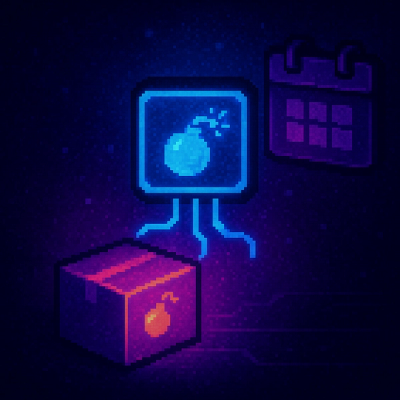
Security News
OWASP 2025 Top 10 Adds Software Supply Chain Failures, Ranked Top Community Concern
OWASP’s 2025 Top 10 introduces Software Supply Chain Failures as a new category, reflecting rising concern over dependency and build system risks.
@techandsoftware/teletext
Advanced tools
API to render teletext pages using vector graphics in the browser DOM
This package renders teletext pages using vector graphics (SVG).
Quickstart with CDN:
<div id="teletextscreen"></div>
<script type="module">
import { Teletext } from 'https://cdn.jsdelivr.net/npm/@techandsoftware/teletext@latest/dist/teletext.min.js';
const teletext = Teletext();
teletext.addTo('#teletextscreen');
teletext.setRow(0, 'Hello world!');
</script>
For local development, install the module and import the following if you're using vite or similar tooling:
import { Teletext } from '@techandsoftware/teletext';
It can also be run in nodejs by passing in a DOM window, see the API.
The project is licensed under GNU Affero General Public License 3 AGPL-3.0-only. For commercial support and integration enquiries, contact techandsoftwareltd@outlook.com.
The fonts supplied in the demo/fonts directory have their own licenses. See the *.license files in that directory.
This package is compliant with REUSE 3.
setView or enhance().putG3() is called - http://viznut.fi/unscii/loadPageFromEncodedString API is from Simon Rawles' teletext editor - https://edit.tf/FAQs
API to render teletext pages using vector graphics in the browser DOM
The npm package @techandsoftware/teletext receives a total of 17 weekly downloads. As such, @techandsoftware/teletext popularity was classified as not popular.
We found that @techandsoftware/teletext demonstrated a healthy version release cadence and project activity because the last version was released less than a year ago. It has 1 open source maintainer collaborating on the project.
Did you know?

Socket for GitHub automatically highlights issues in each pull request and monitors the health of all your open source dependencies. Discover the contents of your packages and block harmful activity before you install or update your dependencies.

Security News
OWASP’s 2025 Top 10 introduces Software Supply Chain Failures as a new category, reflecting rising concern over dependency and build system risks.

Research
/Security News
Socket researchers discovered nine malicious NuGet packages that use time-delayed payloads to crash applications and corrupt industrial control systems.

Security News
Socket CTO Ahmad Nassri discusses why supply chain attacks now target developer machines and what AI means for the future of enterprise security.